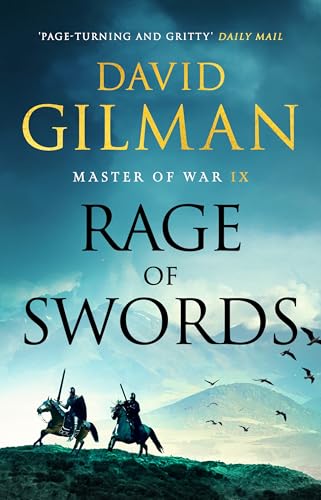The Last Horseman-Men and women at the front
THE LAST HORSEMAN
I found personal accounts of the war from individual soldiers’ recollections, as well as observations made by war correspondents and diaries kept by nurses in the field. I’m sure that any reader with knowledge of this conflict will recognize that one of my characters could, in part, be modelled on Miss Emily Hobhouse, the daughter of an Anglican rector. This Cornishwoman travelled to South Africa to do what she could to alleviate the suffering of the women and children in the concentration camps. These internment camps were set up to house the families whose farms had been burned out in order to disrupt the Boer fighters’ supply lines. This was a badly conceived concept based on a strategic and logistical problem. The welfare of the women and children became a mark of shame for the political and military class; the poor hygienic conditions and lack of sufficient food in the camps caused between 18,000 and 28,000 deaths and left an embittered Afrikaner nation with a legacy of hatred for the English. Hobhouse of the South African Women and Children’s Distress Fund, visited some of the camps in the Orange Free State between January and April 1901. Hobhouse published her findings to a shocked public in England.
Her report led to a government enquiry: the Fawcett Commission. In their report the commission criticized the camps and listed a number of recommendations for improvement. The British High Commissioner in the Cape Colony, Lord Arthur Milner, assumed direct control of the camps in November 1901. He improved the conditions and rations in the camps. Before he took over, the death rate was 344 per thousand per annum in October 1901. Infant deaths, mainly due to measles, stood at 629 per thousand. By January 1902, the overall mortality rate had reduced to 160, and by February to 69, and by May to 20. By the end of the war the death rate had fallen below the peacetime rate. Few people know that there were also concentration camps for Africans. When the white women and children were taken into camps their black servants and labourers from the farms were also detained in one of the sixty-six camps that were set up specifically for them and which claimed the lives of twenty thousand. At one stage there were more than 115,000 Africans incarcerated in these camps and many were used by the British as a labour force. (It is worth pointing out that unlike later Nazi concentration camps these camps were not set up with the express intention of exterminating a section of the human race, but to deprive the Boer commandos of supplies and to induce the burghers to surrender.)
It is interesting that an American lobbyist on behalf of the Boers argued that condemnation of the concentration camps would rebound on Boer supporters because of the role played by American imperialism during the Filipino revolt: the United States authorities had established concentration camps (reconcentrado) to suppress the insurrection in the Philippines early in 1899 where ‘the torture by water cure and pumping sea water into prisoners make it difficult to protest…’ Waterboarding has been around a long time.
On a personal note I came across one of my wife’s ancestors, Lieutenant Nicholas William Chiazzari, who served with the Naval Brigade, Natal Naval Volunteers, who when the Royal Engineers failed to span the Tugela worked through the night to get the troops across. The events were described by W. K. L. Dickson in his book The Biograph In Battle: Its Story in the South African War.
January 16th… Our soldiers looked wretchedly wet and bedraggled as they wound their way over and around the kopjes. We could see them slowly approach the river and test the crossing, two men going up to their middles and wading round to make sure that there were no entanglements for the feet. Then the troopers followed one by one, while others tried to engineer the ferry, which they ultimately abandoned to our naval men, the handy boys, who are signalled for from the valley. Soon a party of thirteen was made up under command of Lieutenant Chiazzari, with Chief Gunner Instructor Baldwin assisting. They managed to quickly repair the ferry and send the troops across, toiling all evening and throughout the night until dawn. General Buller sent word to Captain Jones next morning that his men were worth their weight in gold.
Baldwin’s account of the feat is most entertaining. I abbreviate it somewhat for convenience sake: ‘We got orders to repair and handle the ferry just as it was getting dark, so we nipped down the hill and were soon at work, the Colonel of the Engineers passing it over to us. Lieutenant Chiazzari took the ferry while I remained on this side, and soon had the thing going in good shape. It’s a wonder what a bit of rope will do along with plenty of willing chaps. We were six from [HMS] Terrible, and seven Natal Volunteers, including Lieutenant Chiazzari… Before dawn we had taken nearly all over at the rate of 126 horses and three waggons in forty-two minutes…
In addition to the gratitude of General Buller, Lieutenant Chiazzari was thanked by Major General N. G. Lyttelton and was twice mentioned in despatches and awarded the Distinguished Service Order. The hardships experienced by the soldiers was also reflected in the poor conditions for the hundreds of thousands of horses brought into this war. For those horses that were not butchered for meat in the siege towns many suffered grievous wounds from gun and shell fire. No British war since 1815 had been so costly – by the end of this conflict more than £200 million had been taken from the British coffers. More than 400,000 horses and mules were killed. War is a nasty business.


